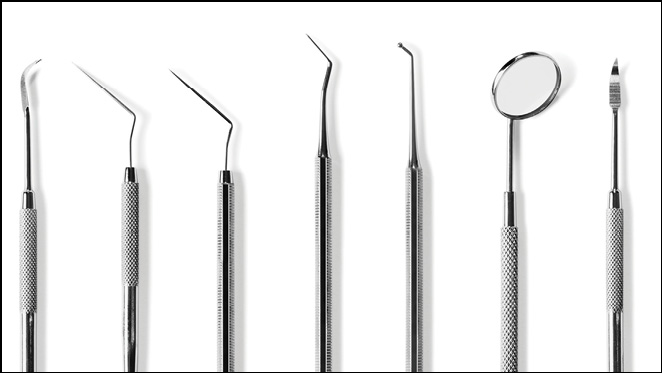
Dental hygiene instrumentation is a skill initially developed in dental hygiene school but is continuously refined and perfected throughout a dental hygienist’s career. The strategic selection, precise adaptation, and safe, effective use of instruments and ultrasonic tips and inserts is a refined art, polished over years of practice. The importance of maintaining the functional safety of these dental tools cannot be overstated, as it directly affects patient outcomes, clinician health, efficiency, and career longevity. Let’s explore why functional safety is essential, common maintenance pitfalls, and effective strategies for enhancing safety and efficacy standards.
The significance of functional safety
Functional safety in dental instruments encompasses their reliability, effectiveness, and integrity. For dental hygienists, these tools are extensions of their hands, influencing the quality of treatment, the time required, and the level of patient comfort.1,2,3,4 A compromised or dull hand instrument can cause:
- Burnished calculus
- The need for additional working strokes
- Slipping and subsequent tissue laceration
- Hand and muscle fatigue
- Frustration for the patient and clinician
- Blades that are compromised and do not hold the original design and function
- Overly sharpened or thinned blades that cause damage or break intraorally
- Altered angles resulting in root damage and/or gouging
Similarly, proper replacement of Magnetostrictive Inserts and Piezoelectric tips is crucial. With around 1mm of wear, efficiency can drop by 25%, and wear of 2mm can result in up to a 50% reduction in effectiveness.7 Worn ultrasonic tips can lead to:
- Decreased vibration
- Decreased water flow
- Increased pressure and power by the operator
- Reduced efficacy in calculus and biofilm detection and removal
- Decreased comfort and increased time required for the patient
Challenges in appropriate replacement protocols
Despite the critical nature of functional safety, dental offices often face challenges that compromise instrument integrity for both hand instruments and ultrasonic tips and inserts. The main constraints seem to boil down to a lack of time, skill, money or a combination of all three.9
Financials
Financial constraints can deter practices from replacing their dental hygiene instruments, tips, and inserts regularly. Additionally, dental hygienists may be reluctant to ask for new instruments and inserts due to:
- Fear of asking for new tools
- Unknown or unavailable yearly budget
- Not feeling valued enough to voice their needs
- Pre-existing financial constraints on the practice
- Lack of awareness regarding the impact on the patient
- Lack of knowledge around appropriate replacement times
Consequently, instruments, tips, and inserts may be used past their optimal lifespan, leading to reduced efficacy and heightened risks to the patient, practice, and clinician.1,2,8
Frequency and quality of sharpening practices
Statistics reveal varying practices among dental offices regarding instrument maintenance. While guidelines recommend sharpening hand instruments after approximately every 7-10 uses to maintain optimal performance and reduce wear, surveys indicate that many practices fall short of these recommendations.2,9 The following factors contribute to irregular sharpening practices or lack of:
- Time constraints
- Inadequate training
- Lack of confidence in technique
- Poor sharpening tools
- No official protocol in place or insufficient emphasis on maintenance protocols
Strategies for upholding functional safety
To address these challenges and uphold functional safety standards, dental offices can implement several strategies including:
1. Educational Initiatives – Provide ongoing training and education on instrument maintenance protocols, emphasizing the importance of regular sharpening with consistent technique and timely instrument evaluation and replacement. Compare inserts and tips to the wear cards provided by the manufacturer to help monitor and replace as required. Most ultrasonic insert and tip manufacturing companies provide wear cards that are downloadable through their websites.
2. Invest in Quality Instruments – Allocate resources for acquiring high-quality instruments that offer superior quality steel. One example is LM’s DuraGradeMaxTM Stainless Steel (Curion) proprietary alloy, which produces sharp, durable cutting edges that will stay sharp longer than conventional stainless-steel instruments, thereby minimizing the need for as frequent sharpening and replacements.6
3. Consider Sharpen Free – LM Instruments (Curion) has introduced sharpen-free tools crafted from an exceptionally durable, carbide-enhanced, nickel-free metal, coated with a multi-layered micro membrane using cutting-edge PVD (Physical Vapor Deposition) technology. This diamond-like coating ensures maximum wear resistance and superior hardness. These instruments safeguard your initial investment, eliminate the need for sharpening, and enhance both functional safety and effectiveness. They also help reduce the risk of musculoskeletal disorders.3,5,6 By minimizing the need for frequent sharpening, you save time and reduce weekly maintenance costs associated with sharpening, hiring sharpening services, lost production time, and re-sterilization material costs. Additionally, these instruments maintain their functional safety by avoiding issues such as thinning, misshaping, or beveling that can occur very quickly with improper sharpening techniques.
4. Establish a Budget – Discussing a yearly budget as a team is crucial for effective planning. As an RDH, it is essential to come prepared by outlining your specific needs, estimating approximate costs, and presenting a detailed maintenance schedule. Additionally, gather and present supporting studies on optimal replacement intervals and the benefits of high-quality, reputable instruments, tips and inserts. For business owners, receiving this well-organized information in advance demonstrates professionalism and respect for the proposed investment, facilitating a more informed and productive budget discussion.
5. Consider a sharpening service – Several companies exist that serve their dental communities through on-site or off-site sharpening services. A reliable, highly trained professional can help reduce the risk of altered, inappropriately sharpened instruments and offer guidance to the practice around appropriate replacement.
Conclusion
Functional safety of dental instruments is pivotal for maintaining patient care standards and operational efficiency in dental practices. 2,5 By addressing challenges in instrument maintenance and emphasizing the importance of regular sharpening and/or timely replacement, dental hygienists can ensure optimal performance, career longevity, and patient safety. Upholding these standards not only enhances treatment outcomes but also fosters patient trust and satisfaction, positioning dental practices as pillars of reliability and excellence in oral healthcare.
The commitment to functional safety in dental instruments is not merely a regulatory requirement but a cornerstone of effective patient care in dental hygiene practice.
References
- Dong, H., et al. The effect of tool handle shape on hand muscle load and pinch force in a simulated dental scaling task. Applied ergonomics. 2007; 38(5): 525-31. doi:10.1016/j.apergo.2006.09.002.
- Tal H, Panno JM, Vaidyanathan TK. Scanning electron microscope evaluation of wear of dental curettes during standardized root planing. J Periodontol. 1985 Sep;56(9):532-6. doi: 10.1902/jop.1985.56.9.532. PMID: 3897505.
- Williamson DeStefana, MA, Sharpness matters: Surveying hygienists’ instrument use and challenges, RDH Magazine, June 12, 2024
- Hayes, M.J., et al. A systematic review of musculoskeletal disorders among dental professionals. International Journal of Dental Hygiene. 2009; 7(3):159-65. doi:10.1111/j.1601-5037.2009.00395.x.
- Suedbeck JR, Ludwig EA. Pinch force generation during scaling by dental professionals: A systematic review. Int J Dent Hyg. 2023 Aug;21(3):514-523. doi: 10.1111/idh.12649. Epub 2023 Jan 19. PMID: 36524311.
- Hayes MJ. The Effect of Stainless Steel and Silicone Instruments on Hand Comfort and Strength: A pilot study. J Dent Hyg. 2017 Apr;91(2):40-44. PMID: 29118255.
- Narukurthi H., et al. Comparison of Non Surgical Periodontal Treatment Outcome and Clinician’s Comfort Levels using LM ErgoMax over Hu-Friedy Hand Instruments- A Randomised Clinical Trial. Journal of Clinical and Diagnostic Research, February 2023;17(2):ZC46-ZC51
- Lea SC, Landini G. Walmsley AD. 2006. The effect of wear on ultrasonic scaler tip displacement amplitude. J Clin Periodontol. 2006;33;1:37–41.
- Vengatachalapathi H, Naik R, Rao R, Venugopal R, Nichani AS. The Effect of Piezoelectric Ultrasonic Scaler Tip Wear on Root Surface Roughness at Different Working Parameters: An Atomic Force Microscopic and Profilometric Study. J Int Acad Periodontol. 2017;19(1):15-21. Published 2017 Jan 2.
About the Author

Beth is an international speaker who has been a Registered Dental Hygienist for nearly 20 years. She gained her clinical knowledge and skills through general and independent practice, mobile dental hygiene, orthodontics and periodontics. Beyond her clinical experience, Beth is the Manager of Clinical Affairs for Curion, an rdhu speaker, a writer, a board member for Dental Hygiene Quarterly and a cast member of The RDH View. Beth@curion.ca / @bethparkesrdh












